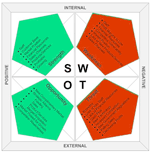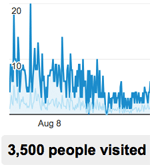Different tools to help you with your competitive website data analysis

This post was originally posted several years ago and was last updated in 2017
In an earlier post SWOT analysis for your website, I mentioned the four elements of your SWOT analysis include identifying your website strength (S), uncovering your its weaknesses (W), identifying opportunities (O) for the site and uncovering threats (T) against it. While a decent web analytics application like Google Analytics can help you get insight into your own website S and W elements, what and how can you know about your competitor’s web performance in order to make your SWOT analysis more complete? I emphasized “web performance” as opposed to other general information that you can obtain by browsing your competitors’ websites. Below are some tools to help you get some idea about your competitors’ website performance.




